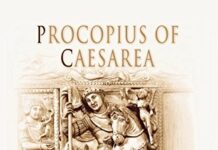
Ebook Info
- Published: 2017
- Number of pages: 440 pages
- Format: PDF
- File Size: 25.34 MB
- Authors: Anthony Kaldellis
Description
In the second half of the tenth century, Byzantium embarked on a series of spectacular conquests: first in the southeast against the Arabs, then in Bulgaria, and finally in the Georgian and Armenian lands. By the early eleventh century, the empire was the most powerful state in the Mediterranean. It was also expanding economically, demographically, and, in time, intellectually as well. Yet this imperial project came to a crashing collapse fifty years later, when political disunity, fiscal mismanagement, and defeat at the hands of the Seljuks in the east and the Normans in the west brought an end to Byzantine hegemony. By 1081, not only was its dominance of southern Italy, the Balkans, Caucasus, and northern Mesopotamia over but Byzantium’s very existence was threatened. How did this dramatic transformation happen? Based on a close examination of the relevant sources, this history-the first of its kind in over a century-offers a new reconstruction of the key events and crucial reigns as well as a different model for understanding imperial politics and wars, both civil and foreign. In addition to providing a badly needed narrative of this critical period of Byzantine history, Streams of Gold, Rivers of Blood offers new interpretations of key topics relevant to the medieval era. The narrative unfolds in three parts: the first covers the years 955-1025, a period of imperial conquest and consolidation of authority under the great emperor Basil “the Bulgar-Slayer.” The second (1025-1059) examines the dispersal of centralized authority in Constantinople as well as the emergence of new foreign enemies (Pechenegs, Seljuks, and Normans). The last section chronicles the spectacular collapse of the empire during the second half of the eleventh century, concludingwith a look at the First Crusade and its consequences for Byzantine relations with the powers of Western Europe. This briskly paced and thoroughly investigated narrative vividly brings to life one of the most exciting and transformative eras of medieval history.
User’s Reviews
Editorial Reviews: Review “With excellent maps, genealogies, notes, glossary, bibliography, index, sometimes hard going, but always rewarding, this will be a key text to the period.” — Adrian Spooner, Classics for All “a significant addition to current scholarship, especially as a manual for the general audience” — Georgios Theotokis, Speculum”…very useful and readable book … Summing Up: Essential. Upper-division undergraduates and above.” –R. T. Ingoglia, CHOICE”A stylish and fast-paced narrative that weaves politics, society, and individual characters together into a fascinating depiction of a lively, dynamic, and culturally diverse civilization at its height. Firmly rooted in the contemporary sources and with a well-tuned appreciation of current scholarly debates, Kaldellis’ account is set to become the standard ‘go-to’ political narrative of the medieval eastern Roman or Byzantine empire in its heyday.” –John F. Haldon, Princeton University”A learned and critical reassessment of the standard narrative, which is at the same time an engaging and lively account of an exciting period in the history of Byzantium.” –Paul Magdalino, University of St. Andrews”Anthony Kaldellis’ new history of Byzantium is a major achievement. By setting aside the pre-conceptions of much of the secondary literature, and returning to the sources, he is able to reconstruct the dynamics of imperial power and politics across the crucial years between the imperial expansion of the late tenth century and the First Crusade. This book will be required reading for students and scholars not only of Byzantium, but also of the Medieval West.” –Peter Sarris, University of Cambridge”In this lucid and well-researched history, Kaldellis, a classics scholar, examines the rapid expansion and subsequent contraction of Byzantium in the 10th and 11th centuries. This work serves impressively as both a general introduction to the political, economic, and military history of the period and a narratively engaging and clear interpretation of the causes and effects of the empire’s rise and fall. The book nicely balances explication and commentary; Kaldellis includes details that bring his history to life-such as the facial hair patterns of a Byzantine enemy…The work is thus both educational and enjoyable, almost a canonical model of how to write history for both lay and professional readers. This is a welcome introduction to Byzantine history, which is little known in the West relative to earlier Greek or Roman periods and deserves wider understanding and discussion.” –Publisher’s Weekly About the Author Anthony Kaldellis is Professor of Greek and Latin at The Ohio State University. Author of The Christian Parthenon: Classicism and Pilgrimage in Byzantine Athens (CUP 2009) and Hellenism in Byzantium: The Transformations of Greek Identity and the Reception of the Classical Tradition (CUP, 2007), among numerous others (including two in progress OUP).
Reviews from Amazon users which were colected at the time this book was published on the website:
⭐Well-written, well-reasoned political history of Byzantium from the reign of Basil II through the First Crusade. Focuses on imperial politics, war, and foreign policy, making it somewhat “old school”, with little coverage of cultural, social, or economic issues.In addition to providing an overall narrative, the book does an excellent job discussing the nature of the evidence we have for drawing conclusions (in contrast to Angold’s The Byzantine Empire: 1025-1204 (also recommended), which sometimes makes sweeping interpretations based on little or no evidence without telling the reader.) The truth is that many explanations for the evolution of Byzantium are largely conjecture. This is OK because the primary evidence is limited – but it’s nice when the author tells you when he is guessing as opposed to when he relies on hard evidence.The book offers novel (or not widely known) perspectives on several important issues.• Rejects the traditional view that politics during this period was a fight between the central government and landed aristocratic families. Instead, it argues that most of the turmoil was between competing generals.• Attempts to resuscitate the reputation of Constantine IX Monomachos.• Argues that the First Crusade was partly a Byzantine initiative to reclaim territories lost to the Seljuks.For the most part, the arguments are convincing. The book also does a nice job detouring into the histories and dynamics of the external people that impacted Byzantium, such as Hamdanids and Seljuks. In most Byzantine histories, these people suddenly appear in the story when they impact the Empire, then exit when their paths diverge, leaving little understanding of why they did they what they did.There are two minor weaknesses to an otherwise strong book.• The author renders most Byzantine names in Greek, even when a well-known English version is available: so Constantine VII becomes Konstantinos VII. The notion that there is a “true” vs. “false” translation of a name from another language misunderstands the social nature of writing, and the idea that it is “respectful” to transliterate from Greek doesn’t square with the fact that the aforementioned Constantine VII spelled his name with a “C” and not a “K” on his own coinage. The reason for this naming practice has something to do with academic politics, and is not a major problem, but it is distracting, and makes me wonder what other information was being translated through a political lens.• The other limitation comes near the end when the book shifts tone in describing the empire’s breakdown. From a dispassionate analysis, the writing becomes somewhat outraged or moralistic, decrying the “greedy” Normans and Turks. Again, not a major problem, but there is a lost opportunity – the book doesn’t delve deeply into internal causes for the decline, seeming to be satisfied with pointing fingers at “opportunistic” outsiders.
⭐This was a great read but I need to point out – a star is off because there was a startling amount of grammatical and spelling errors sprinkled throughout. Whoever was the editor here was definitely sleeping on the job. Besides that, Kaldellis really makes this a no-nonsense narrative of Byzantine military might and poisonous imperial politics, carefully logging the smaller tragedies that start to sap the Eastern Roman Empire of stability and prestige.
⭐Fascinating read. Especially given the remarkable time period. There was a lot of information in here i counted find anywhere else especially regarding the 10th century emperors. Anthony provides a lot of perspective and helped to dispel some of the typical tropes of Byzantine history one might stumble on Wikipeida and regurgitate on online forums just because Gibbon said it . Such misconceptions as Constantine IX being a horrible ruler, The landed aristocratic/post feudalism myth, Manzikert being a total disaster etc. Anthony helps to clear up these biases and provides clear logical reasoning using varied (non byzantine as well) sources and sights where evidence does and does not exists to support them. Anthony provides periodical assessments in the narrative before moving on to the next chapter ( e.g. piecing together the events that led to the loss of asia minor to the Turks). I feel I have more complete and vivid picture of the time period leading up to the First Crusade from Basil II which also has the side effect of further elevating the success of Alexios’s restoration. Anthony doesn’t even up-play his rule it just sets a precedent given the scope of the period and raised on the backdrop of all the turmoil leading up to his reign. Only drawback is using the un-latinized names of the persons in the history. He explains why he does this but I do not agree with it. I would rather read ” John” than “Ioannes” but the book as whole was very easy to read and find myself having finished the book remembering a good deal of what I read.
⭐The question is why did the Byzantine Empire, the strongest military power in the Mediterranean, collapse utterly after the Battle of Mantzikert. The ideas presented here seem to me to be plausible, as much so as can be, so far removed from the time and with inadequate historical records. Tis collapse had enormous consequences for the history of Europe and the Near East so it is valid for use today, we are still being affected by it. Great and thought provoking read.
⭐An excellent book. Kaldellis writes with a subtle humor and has well-articulated pushbacks against what he persuasively suggests are incorrect interpretations of the period.It’s a serious work of scholarship, but a highly readable one. Machinations and politicking of various Michaels and Ioannes and Basils are able to be picked apart, as are the motivations of outside polities interacting with Romania. It’s an achievement to separate all these competing interests and give them their due and still keep a narrative going. I’m impressed.My only complaint is the period of the first crusade only filled the epilogue, rather than being its own section. But I suspect Kaldellis will return to the subject, and there are other volumes that address this period.I will probably read this again immediately. One of my favorite historical works in years.
⭐Good book, very informative. He presents the facts while dissecting some of the conjecture and speculation of other historians. Reviews the sources for each game period, discussing the likely biases and other faults of each one. However, it’s pretty dry, reads more like a textbook. If you’re looking for a flowing narrative that will draw you in and read like a story, read something by Tom Holland instead.
⭐This book, as others mentioned, is certainly a good one, with the author re-examining consensus views, discussing some of the main issues of Byzantine historiography and presenting his own interpretations. The book is indeed an extremely interesting one and easy to read, while still being a piece of scholarship that summarises the current state of Byzantine studies and its evolution. It is, however, controversial at times, with the author making very interesting cases but sometimes pushing them a bit too far at the risk of being unconvincing in his attempts to be original.The best example of this is the reign of Constantin IX Monomachos (1042-1055) whose reign, following Psellos, has been portrayed very negatively as disastrous, as the beginning of the Empire’s decline and the root cause of its future collapse. Kaldellis’ spirited defence of Monomachos and his reign is both spirited and mostly convincing, in particular when identifying the negative biases introduced by Psellos. Another quality is the author’s provision of much needed context, with the Emperor surviving dangerous rebellions (in particular that of Maniakes) and managing to hold his own against nomadic incursions and invasions in the East and across the Danube and a Russ attack on Constantinople. While some of his successes can be attributed to luck – the death of Maniakes, killed in battle although victorious put an end to his very dangerous rebellion – and other victories may be attributed to some of his generals, the Emperor himself probably deserves more credit than he is generally given. This, however, does not make Monomachos into the talented general and commander that Kaldellis tries to make him out to be and this is where the author becomes unconvincing.A similar point can be made regarding Monomachos’ internal politics. He is generally accused (by Psellos and modern historians subsequently) for squandering the Empire’s financial resources through the distribution of pensions (rogai) to literally “buy support” and for dismantling the Empire’s defences, in particular by disbanding the army of Iberia, leaving it unprepared to face the incursions and onslaught of the Seljuk Turks.In both cases, Anthony Kaldellis shows to what extent these claims are biased, misleading and even malicious to some extent. The distributions of pensions was typical of many of the Emperors who lacked legitimacy after Basil II. Monomachos was neither the first nor the last to do so even if these did create an increasing burden on imperial finances. It was also a much safer and less risky alternative than the traditional way of achieving legitimacy in the Byzantine Empire (i.e. through military victory), a choice that tends to confirm that Monomachos was not the brilliant general that the author would like to make him out to be.A more convincing case is to show that the Emperor’s intentions was clearly not to dismantle the Empire’s defences. Quite to the contrary, he was probably trying to shore them up by replacing the Iberian frontier troops tied to the land by heavily equipped but more mobile full-time professional soldiers serving for pay, as a number of his predecessors had done, starting with Basil II himself. The problem with this, and this is something that the author does not mention, is that there were risks in converting the military service owed by these troops deployed on the frontiers into taxes. The first was that there was no assurance that the money, once levied, would effectively be used in its entirety to hire and equip professional soldiers (i.e. “mercenaries”, whether native or – increasingly – foreign). Another, perhaps more important, drawback is that while these “mercenaries” were more dependent upon their paymaster and therefore supposedly more loyal, they were also more expensive, therefore fewer in numbers and perhaps even in insufficient numbers to defend the frontiers should these be threatened and attacked in several points simultaneously.The book is also valuable in many other respects when summarising the current state of Byzantine studies and dispelling misunderstandings and misconceptions that were prevalent half a century ago. One is the supposed opposition and competition between the landed aristocracy of Asia Minor and the so-called civilian bureaucracy in Constantinople whereas in reality members of the aristocratic families allied through marriages and could be found in either civilian or military commands.Another set of valuable points are those related to the Byzantine “Reconquista”, with the author showing (as others such as Whittow and Haldon has before him) that while it can be explained through the Empire’s superior military organisation and expanding economy, it also owed a lot to the strong personalities of the so-called Emperor soldiers (Nicephoros II Phokas, John II and Basil II) and to the comparative weaknesses or even decline of some of its opponents, particularly on the Eastern front. Another interesting feature is the way the author contrasts these three emperors. Nicephoros was probably the best soldier and organiser, but a poor politician and pious, relentless, dour and unpopular to the extent that he was hated in Constantinople. John (his nephew and murderer) was much more dashing and daring as a soldier, but also as astute politician. Basil II, the legitimate heir (to the limited extent that dynastic succession conferred legitimacy), after having to face two major sets of rebellions that almost toppled him from his throne, reigned for the next thirty five years by becoming an autocrat and carefully built up his reputation as a ferocious Emperor that no one would dare to mess withA further interesting debate is about the collapse of Byzantium during the 11th century (after Mantzikert) to determine its causes and pinpoint responsibilities. While many authors tend to find problems rooted in previous reigns (going back to Basil II in some cases), the author tends to heap the blame onto the disastrous reign of Constantine X Doukas (1059-1067). While the author does have many points to make to support such a claim, I did not find it entirely convincing but this, of course, is no more than a personal opinion.Another is to show that rather than the defeat at Mantzikert, the total disaster and collapse was the result of the subsequent civil war with the victorious Seljuk Sultan simply not interested in invading Asia Minor itself which was left exposed to bands of marauding Turkomans over which he had little real control. A related point was to describe and explain the loss of Asia Minor, with the regimes of Michel VII and Nicephoros III more interested – in pure Roman fashion – in fighting usurpers than repelling “barbarian invaders” which they would readily enlist against the former.While this is a remarkable and very interesting book, I did however have three final reservations.One is that the reader may at times need to have quite a bit of background in the history of Byzantium to be able to evaluate and assess to what extent the author’s claims are fully convincing. In other words, while valuable, this book may not be the best introduction to the period covered and may not be the best suited for a general reader lacking such a background.A second point is that in fact the rise of Byzantium started well before 955 AD, the date when Nicephoros became commander in chief of Byzantine forces. At a minimum, it had started under the reign of Romanus Lecapenos and in particular from AD 927 onwards when John Kourkouas began his campaigns in the East against the predatory Arab Emirates along the frontier. If you believe Warren Treadgold, it may even have started well before with the reign of Theophilos (829-842) or even with the Isaurian dynasty with Constantine V and his hammering of the Bulgarians (741-775).The third point has to do with the end of the period chosen by the author. The last section on “a Byzantine history of the First Crusade” is excellent in many respects. The author does make an excellent point when stating that the First Crusade also needs to be told from the perspective of the Byzantines, even if Frankopan has attempted this to some extent. In particular, Byzantine military efforts that took advantage of the First Crusade after it crossed Asia Minor to recover a large part (and the most fertile part) of it in the years 1097 to 1118 and then under the reign of John II, the second of the Comnene dynasty and the son and successor of Alexius, could have been added. This would have made a fourth part and told the often little known story of the other recovery, that of the Comnenian, and its limits.Four strong stars
⭐This is a superb revisionist history that puts to bed so many of the common themes and tropes of the history of Byzantium (or Romania, as Kaldellis correctly insists on calling it). As other reviews have alluded to, the author’s approach of disregarding orthodoxy and returning to the sources, with a critical eye, leads to a much more satisfactory explanation of Byzantium’s rise and fall in the tenth and eleventh centuries. Numerous assumptions are debunked, e.g. the supposed struggles between military and civilian factions, the ‘class’ aspect of the period’s rebellions, Constantine IX’s poor reputation and the direct impact of Mantzikert.Additionally, Kaldellis is not afraid to admit when the sources and evidence are too thin for us to draw solid conclusions, quite the opposite it appears of other historians of the period. It was very refreshing to read an academic admitting that some events and developments are simply too opaque in the sources for us to understand or retell with certainty. The author also uses many more Arab and Armenian sources than the average Byzantine history, giving a much clearer picture of the frontiers.A minor criticism from a personal perspective would be that it was a little too focused on military campaigns and border trouble, while a tad light on affairs in Constantinople and in particular the extensive role of imperial women during this period. Without doubt however, this was an engaging read which I absolutely raced through and the final chapter on the First Crusade is absolutely excellent, leaving you desperate for Kaldellis’ narrative to continue!
⭐An excellent book which challenges – and in my view demolishes – a number of commonly held (mis)apprehensions about the Byzantine Empire. Notably, Kaldellis shows that the frequently repeated tale of powerful families challenging the state and eventually seizing it after the end of the Macedonian Dynasty, simply is not true. The Emperors never had to fear the so-called dynatoi. The challenges came from generals in command of armies, coupled with the fact that the Imperial throne in theory was open to anyone who could seize it. Strongly recommended.
⭐An excellent book, both aimed at the general reader and the student of the period. I genuinely couldn’t put it down, and the writer does incredibly well to keep you interested throughout. It was obvious the frustration that the author felt at times when there is a lack of primary or secondary sources, particularly in the run up to the reign of Romanos IV Diogenes, but they do incredibly well. I would highly recommend this book to anyone; particularly given that the Byzantine period of the tenth and eleventh century is something that we can draw an alarming number of parallels and lessons from.
⭐This is a really interesting period of Eastern Roman History and I am looking forward to getting my teeth into the book. I hope it sheds light on the dramatic decline of the empire after Basil II. Book arrived well packed, in top nick and I think for a relatively chunky hardback book it was very reasonably priced.
Keywords
Free Download Streams of Gold, Rivers of Blood: The Rise and Fall of Byzantium, 955 A.D. to the First Crusade (Onassis Series in Hellenic Culture) in PDF format
Streams of Gold, Rivers of Blood: The Rise and Fall of Byzantium, 955 A.D. to the First Crusade (Onassis Series in Hellenic Culture) PDF Free Download
Download Streams of Gold, Rivers of Blood: The Rise and Fall of Byzantium, 955 A.D. to the First Crusade (Onassis Series in Hellenic Culture) 2017 PDF Free
Streams of Gold, Rivers of Blood: The Rise and Fall of Byzantium, 955 A.D. to the First Crusade (Onassis Series in Hellenic Culture) 2017 PDF Free Download
Download Streams of Gold, Rivers of Blood: The Rise and Fall of Byzantium, 955 A.D. to the First Crusade (Onassis Series in Hellenic Culture) PDF
Free Download Ebook Streams of Gold, Rivers of Blood: The Rise and Fall of Byzantium, 955 A.D. to the First Crusade (Onassis Series in Hellenic Culture)





